Sachsenhausen Concentration Camp
Visit on 2nd August 2023
I am not really certain why I want to catalogue this with such formality, but I think it’s partly to help me process all that I saw & thought about whilst I was there. There is nothing sophisticated or profound here, I don’t think. I just felt that I needed to write it down.
I went early in the morning, in hopes that it would be fairly quiet, as I had no idea what sort of reaction I was liable to have. I did think about going on an official tour, but again decided that I didn’t want to be vulnerable & emotional over this in front of strangers, when I wasn’t certain what emotional reaction I was liable to have.
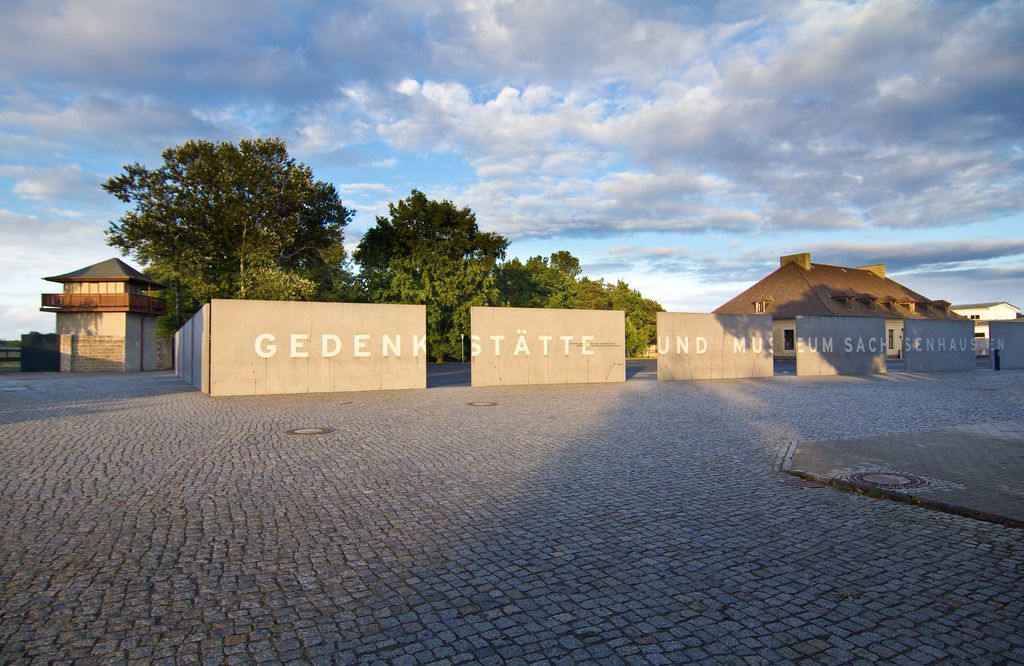
Getting to Sachsenhausen was fairly straight-forward, train from Ostkreuz & then bus directly from Oranienburg to Sachsenhausen memorial. You arrive to a split wall (photo taken from Sachsenhausen-sbg.de as mine did not come out) that states “Memorial And Museum sachsenhausen” which feels very stark. Walking through those you go into the visitor centre. Entrance is free, & audio guides (in multiple languages) are €3.50. The lady at the desk told me to allow 2 hours for the visit, & said that the audio guide contained 6+ hours of recording. She was very pleasant & helpful. I did find myself at several times throughout my visit wondering how people cope with working in such a place, & what sort of outlook it would give you on such things.
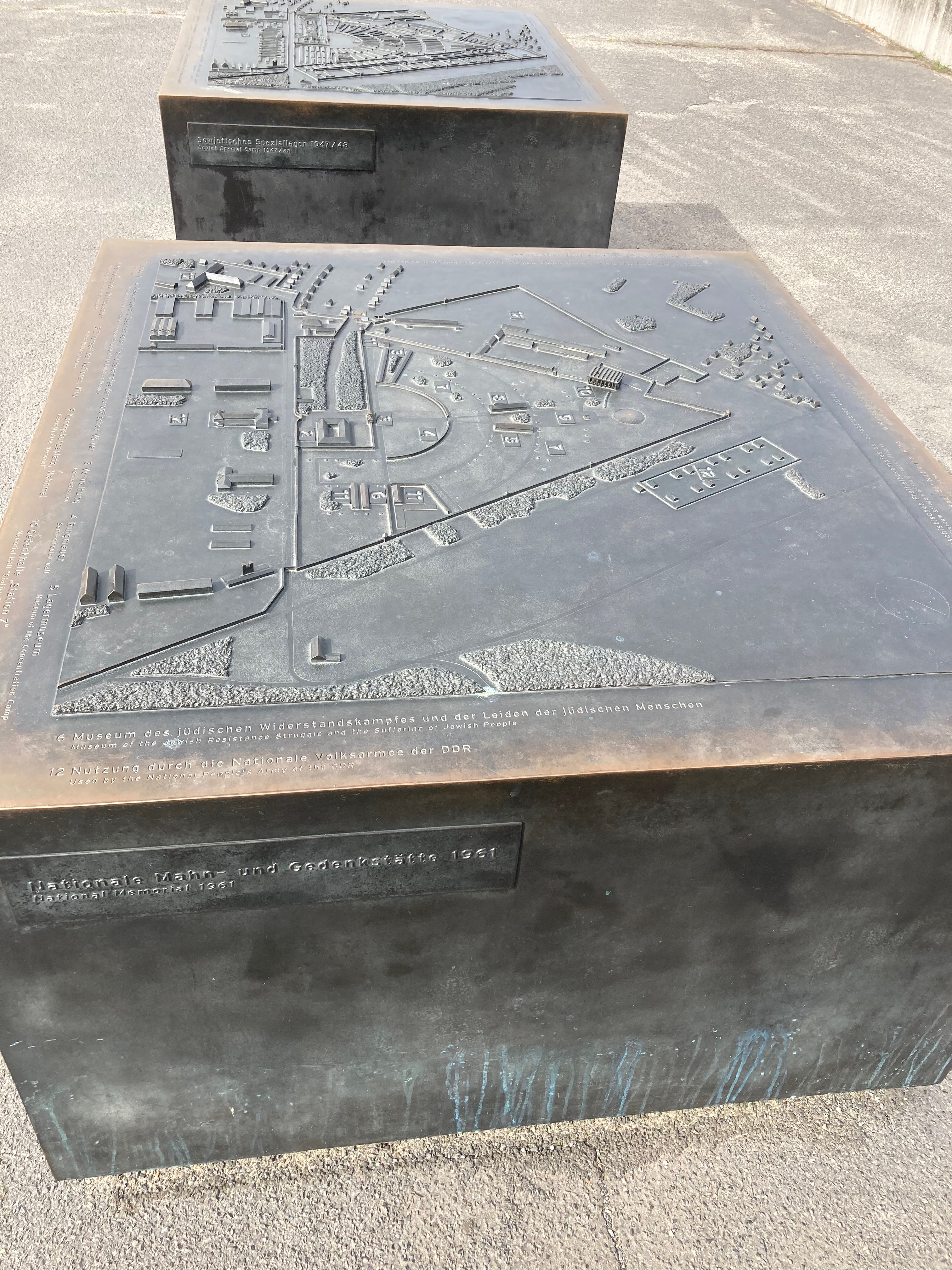
Once I’d got my audio guide, I came out from the visitor centre into the memorial beginning. It starts with 3-D maps of the site, several of them, showing the layout of the site at different times.
A camp in Oranienburg was initially stated by the Nazis in 1933-34, when it was mainly used for persecution of members of opposition parties. This was in the middle of the town, on the site of a disused brewery. This was then closed in 1934, taken over by the SS, & kept as a reserve camp.
In summer 1936, Sachsenhausen Concentration Camp was built, using prison labour. It was designed to be a model for other concentration camps.
When I’d looked at the 3-D map, I was still rather unclear about which way I was facing, & Which way I was supposed to go. This was compounded by the sight of 20-30 cyclists coming down a road I had thought was the entrance to the camp.
(Given that both ends of that road were completely blocked off by large gates with no obvious access I am still really unclear as to where those cyclists came from, as there was definitely no cycling allowed on the site). So, my map reading letting me down, & my anxiety increasing (I was terrified of accidentally doing something disrespectful; walking on the wrong thing or touching something I shouldn’t) I chose the cheats’ option & followed a couple of people who looked like they knew where they were going.
The road that we walked down was a wide path, with a wall on the left & fencing on the right. Through the fence on the right was a building, & the following sign in front of it (photo taken from google maps)
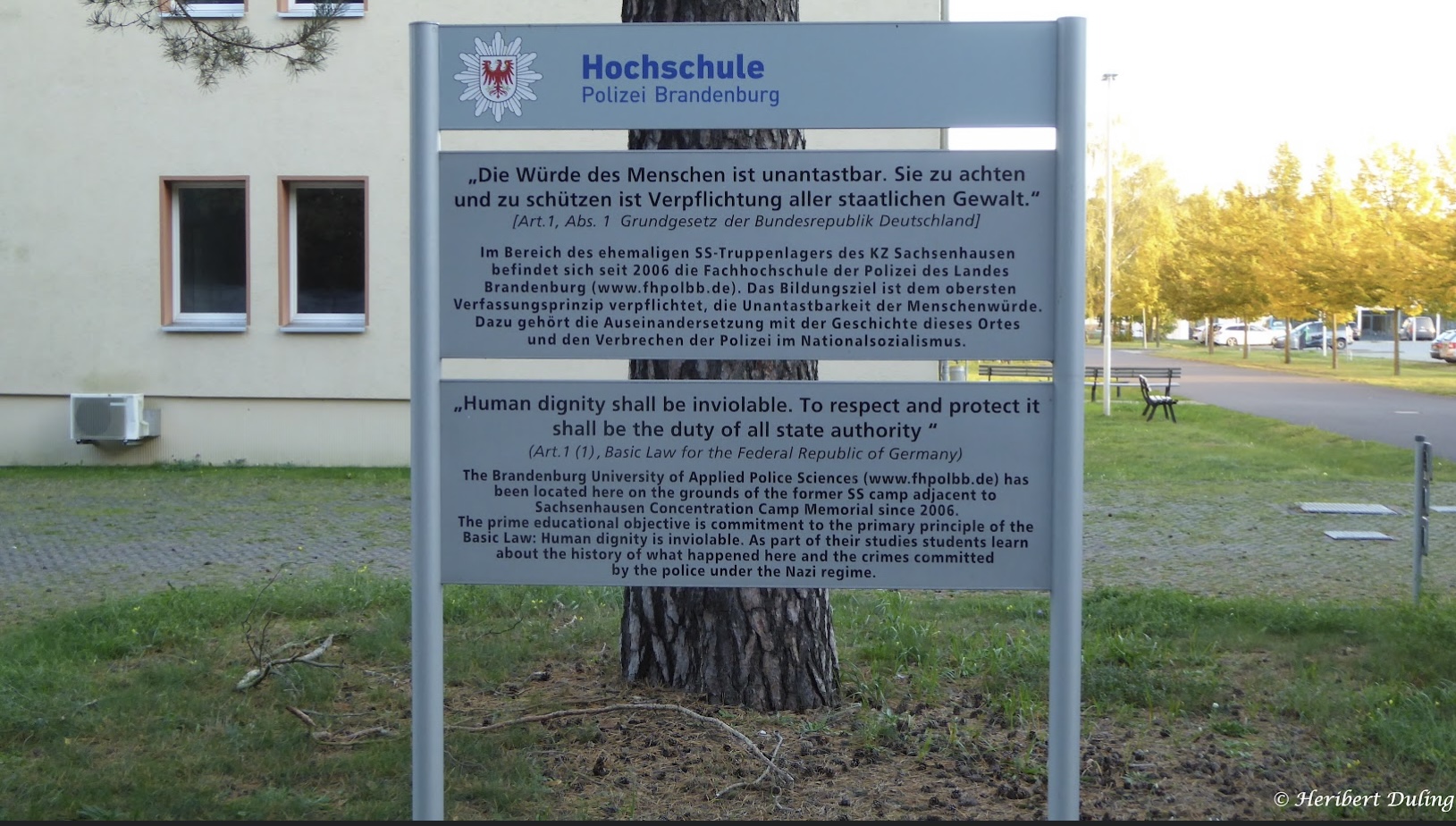
I don’t know what it must be like trying to teach justly & compassionately in a place with such a history, but it was good to see that such things had been explicitly from the following text. But given all the buildings all over the place that are hundreds of years old that I don’t give a second thought too as to what their history is, its possibly just me being oversensitive.
The main entrance to the camp is opposite, with a commandants house immediately to the left. The commandant moved his wife & family in, & various officers also had their families living with them

The idea of either the commandants house or the SS officers housing estate being peaceful or an uneventful place for a family is very incongruous, & I can’t quite get my head around it.
In the commandants house was information about some of the people who had worked at Sachsenhausen, their histories & where else they had worked, plus what ranks they had achieved. Each file also listed their post-war activities. I found myself scanning each file wanting to know that every person had been brought to justice for their crimes. Even though I knew beforehand that that wasn’t the case, it felt like it these people had been made to pay for their crimes, it would make the history easier to file; easier to believe it was “sorted out “ . But it isn’t, & wasn’t.
Also complicating the history, in my head at least, was the information, also in the commandants house, that the same concentration camp had been used between 1945-50 by the Russians. Some of the same people were kept imprisoned as had been held by the Nazis, & Similarly awful treatment had been meted out to prisoners, including mass graves, but not including the gas chambers or crematoria- as these latter two were blown up by the Soviets.
Beyond the commandants house, but before the second wall, was a grassed area with lots of memorials to honour people who were killed in Sachsenhausen. Some of the memorials were for individuals & some for groups. (On a side note, there is a google app for iOS which translates text in images live & it was invaluable for understanding some of the many memorials in different languages).
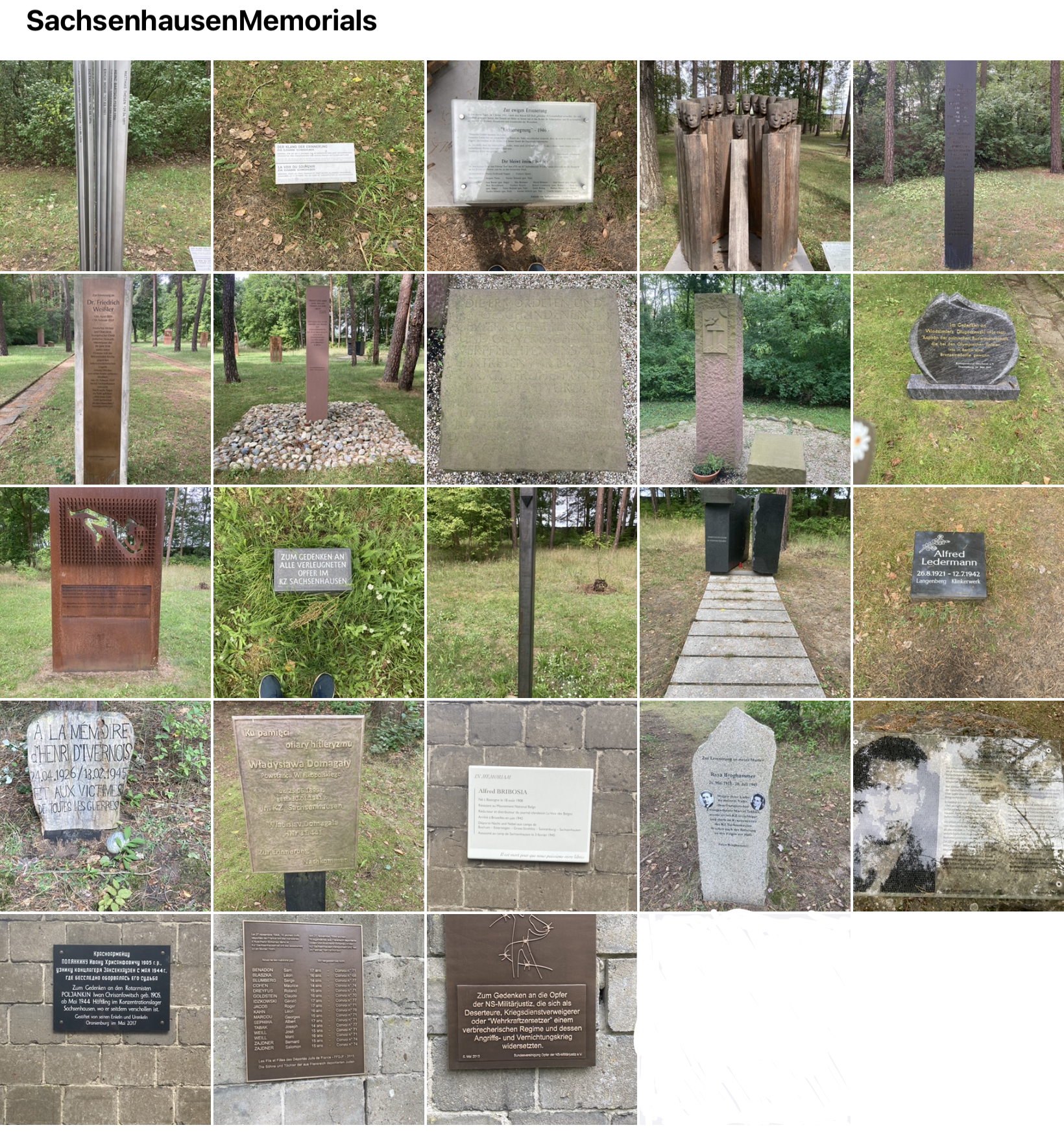
Then I came to the bit I knew I’d been putting off - actually going up to the gates of the camp. I hadn’t realised that “Arbeit Macht Frei” had been on more camps than just Auchswitz, so to see it there in the gate made me shudder.
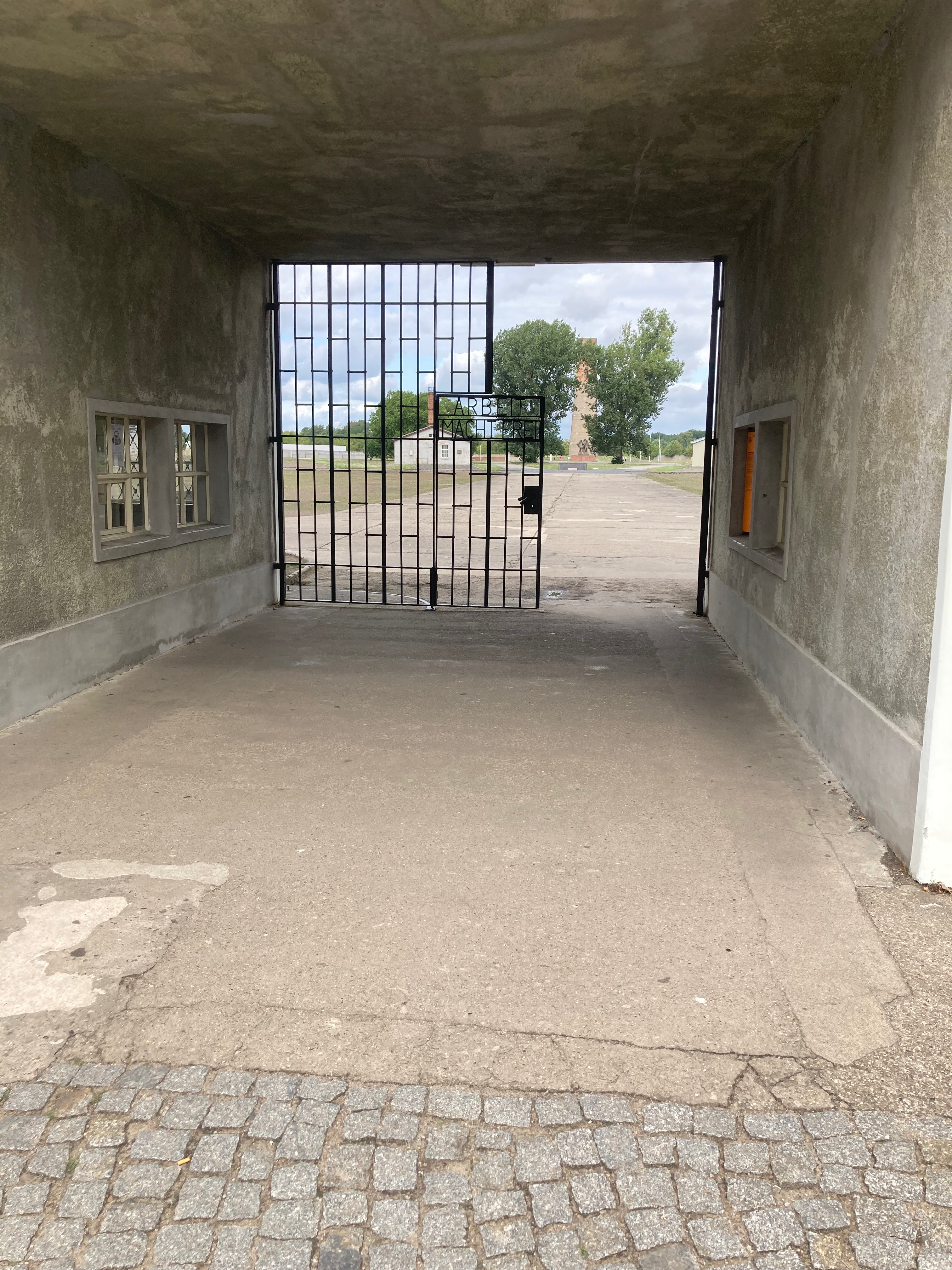
I had always assumed that concentration camps were rectangular, so was taken aback to find out that this one was triangular. It was designed this way in order to give a clear line of sight to all parts of the camp from just one watch tower-but didn’t work so they ended up putting more watch towers in over time.
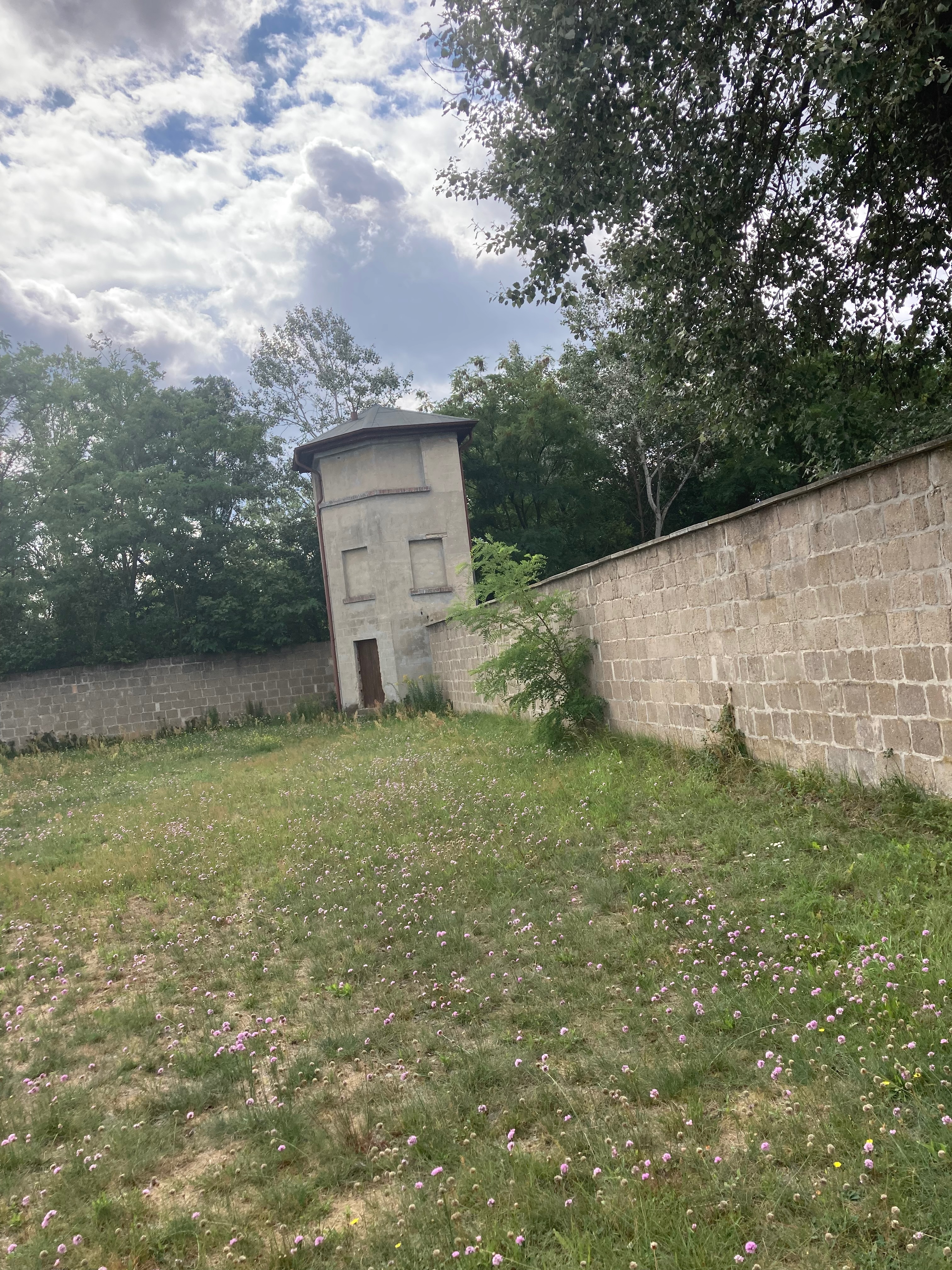
Below is a model of the camp as it would have looked 1939-45. The barracks were all in the triangular section. The “killing section’ was outside the triangle on the left, & contained gas chambers, an execution trench, and the crematorium.
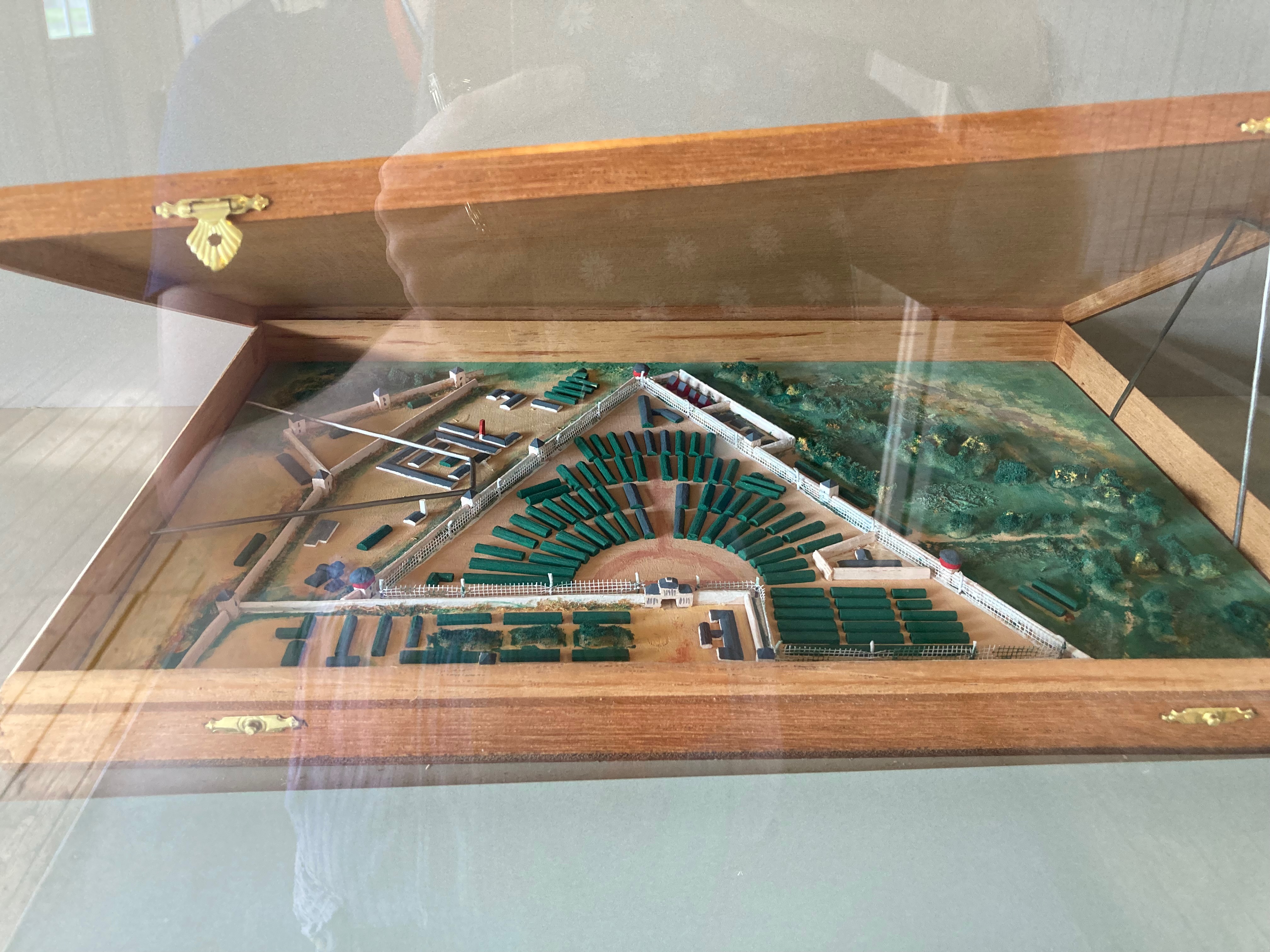
The site is actually remarkably empty. Most of the original buildings were torn down, & only a few examples are still standing. All the foundations are marked, but it wasn’t clear which buildings were original & which were reproductions. The Soviet union first turned it into a memorial, as a triumph of anti-facism over facism - but that first memorial had nothing about the great number of Jewish people or others who were killed & tortured there on racial grounds.
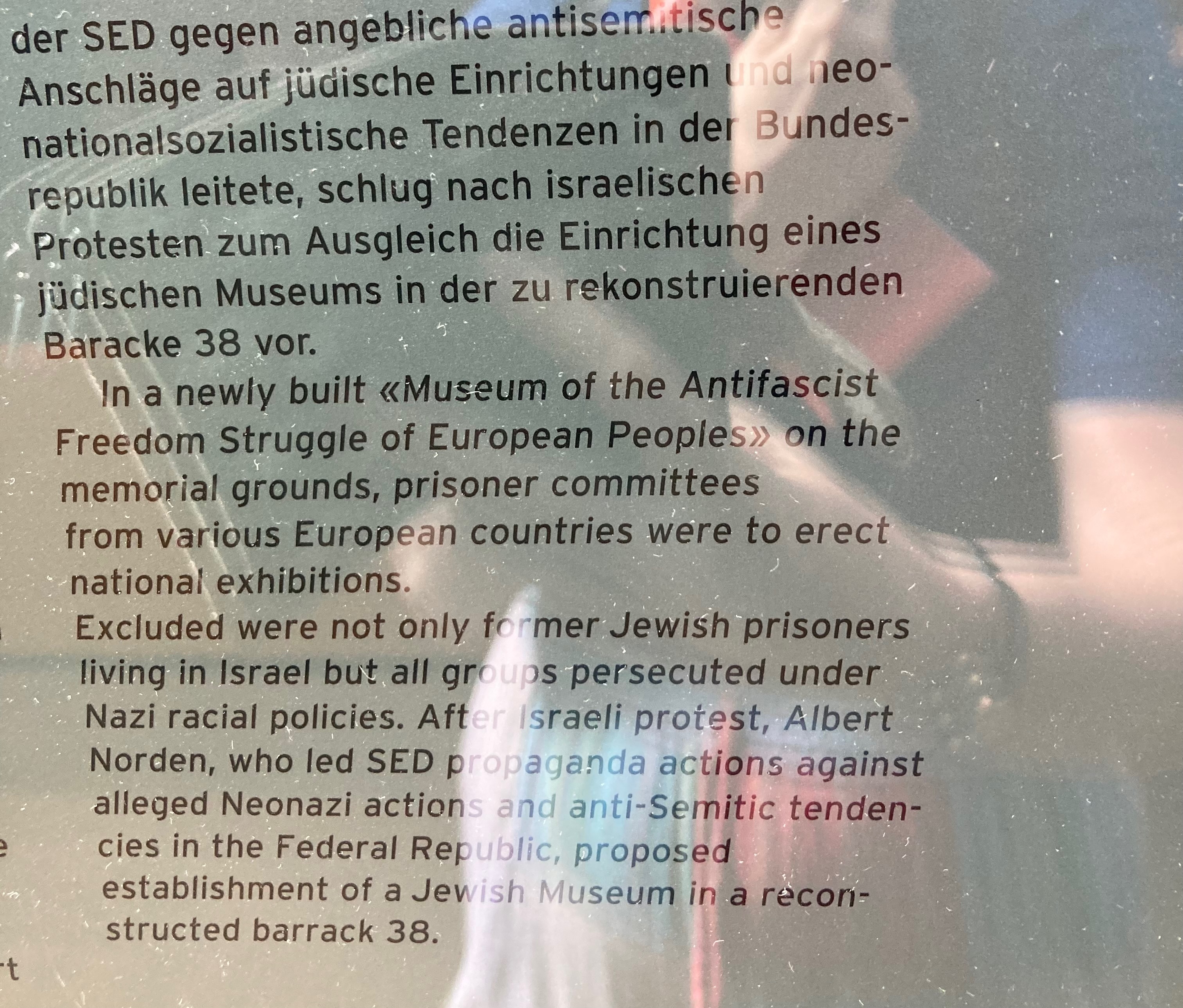
It took an international outcry for one of the Jewish barracks to be reproduced, & from this it can be seen that their quarters & their treatment were in some ways worse than that of the other prisoners (no Jewish people were allowed access to the infirmary. for example). Jewish people were held here until 1942, when most were transported to camps further East. As the soviet advances happened in 1944, Jewish prisoners were brought back West again, back to Sachsenburg and other camps in Germany.
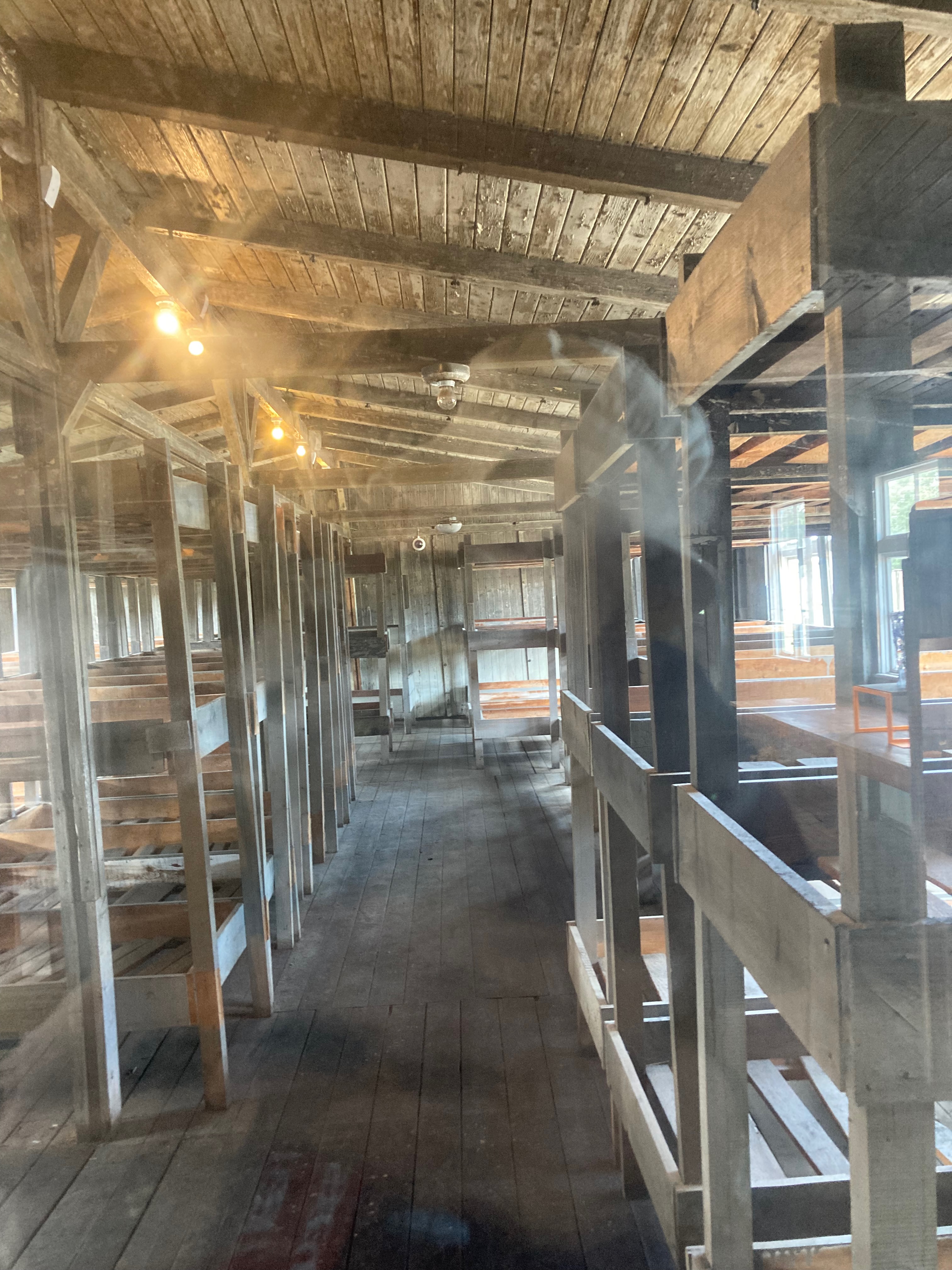
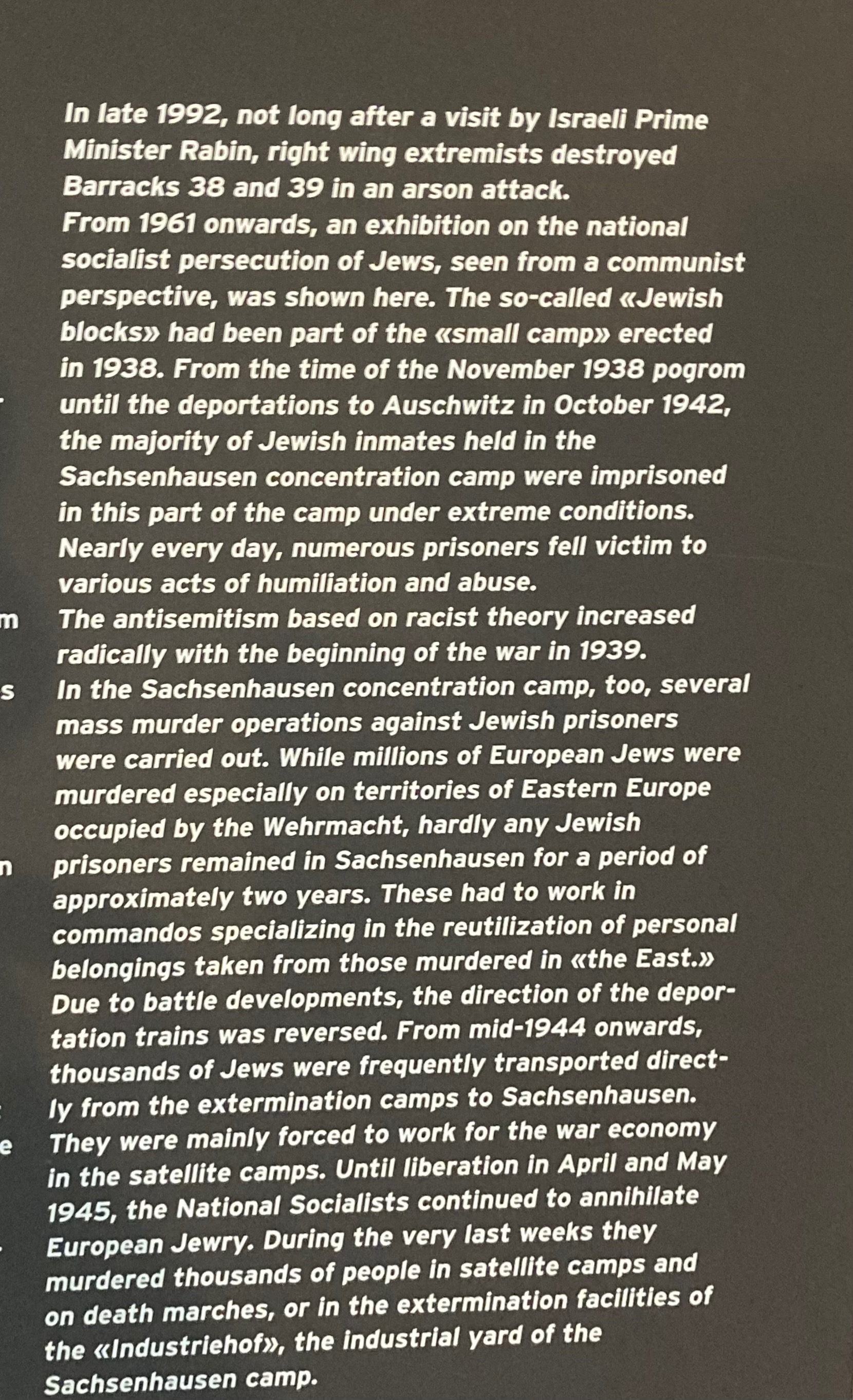
In 1992, after the rebuilding of a Jewish barracks, far right people broke in & fire bombed that barracks, It was rebuilt using the scorched beams. I do not understand why anyone thinks that destroying the Jewish barracks would have been a good thing to do. I can only assume that it was because they thought it was letting lies because they believed that the murder of Jews on such a scale did not happen. But can’t imagine why someone thinks that making such things up would be a good idea, or why anyone believes that someone else would do that. But, it may just be naivety on my part because I can’t understand people telling lies full stop. I will go and read up more on this to see if it is better explained by anyone.
Upon entering this barracks you could smell the charred smell of the wood & see the burned beams. It was difficult to photograph words on glass.
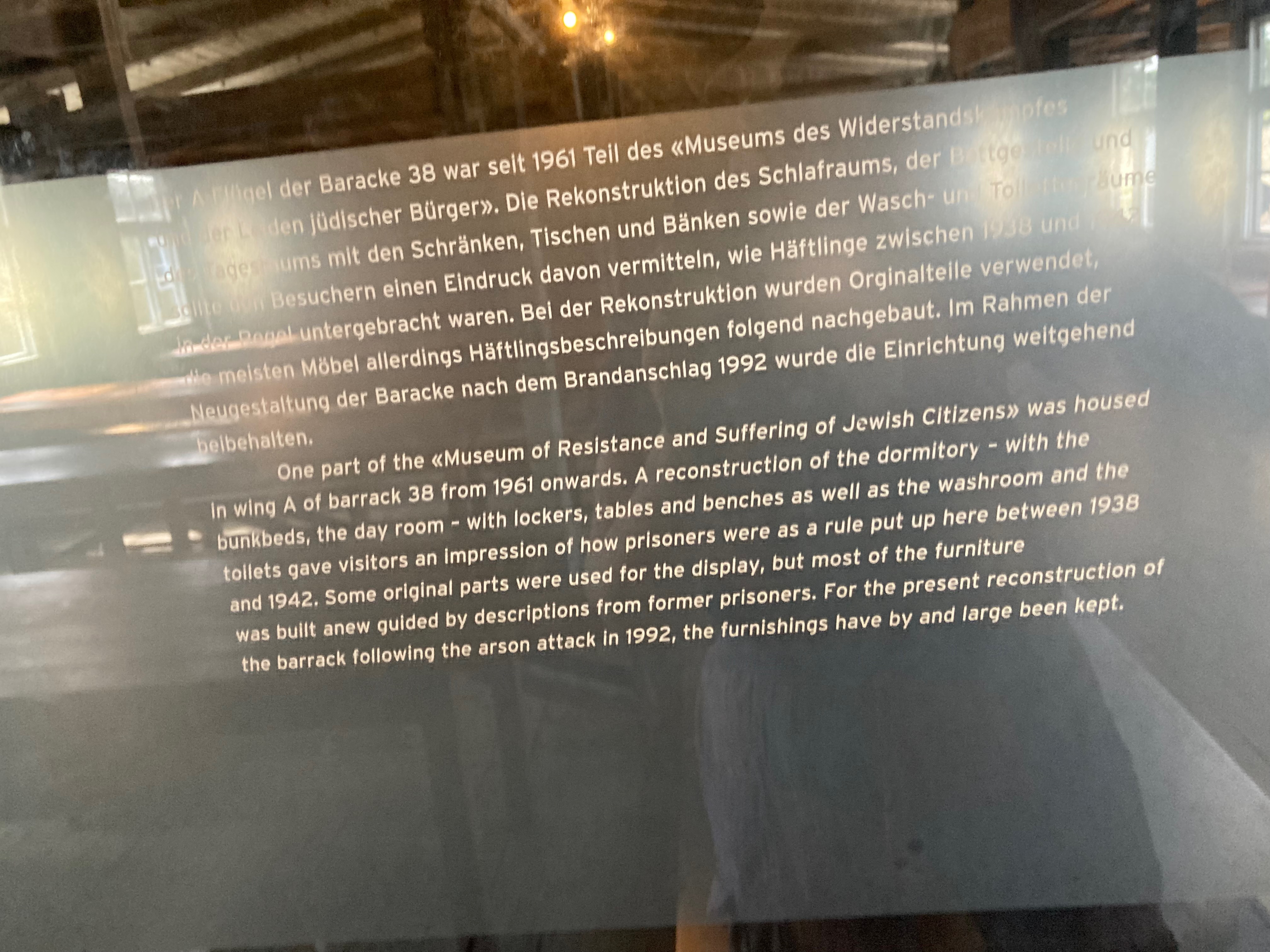
The one section I could not bring myself to dwell on was the juvenile one. Children & young people were held, tortured & killed here, & there were stories of & by some of them, but although I faced all the other horrors, I wimped out of this one.
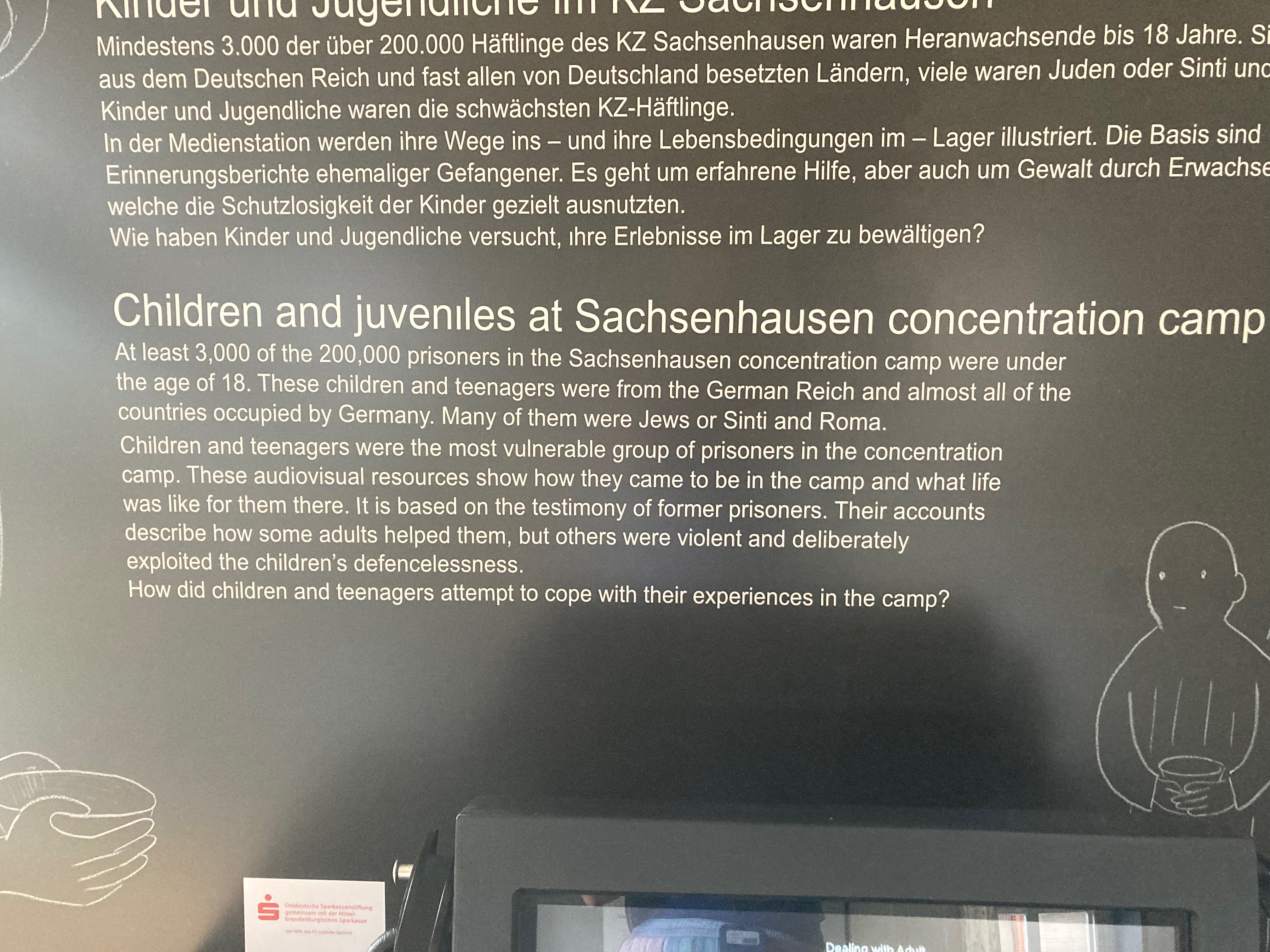
In this camp, people had a number sewn on their clothing, along with a symbol which categorised their’crime’. It wasn’t explained what all the symbols meant.
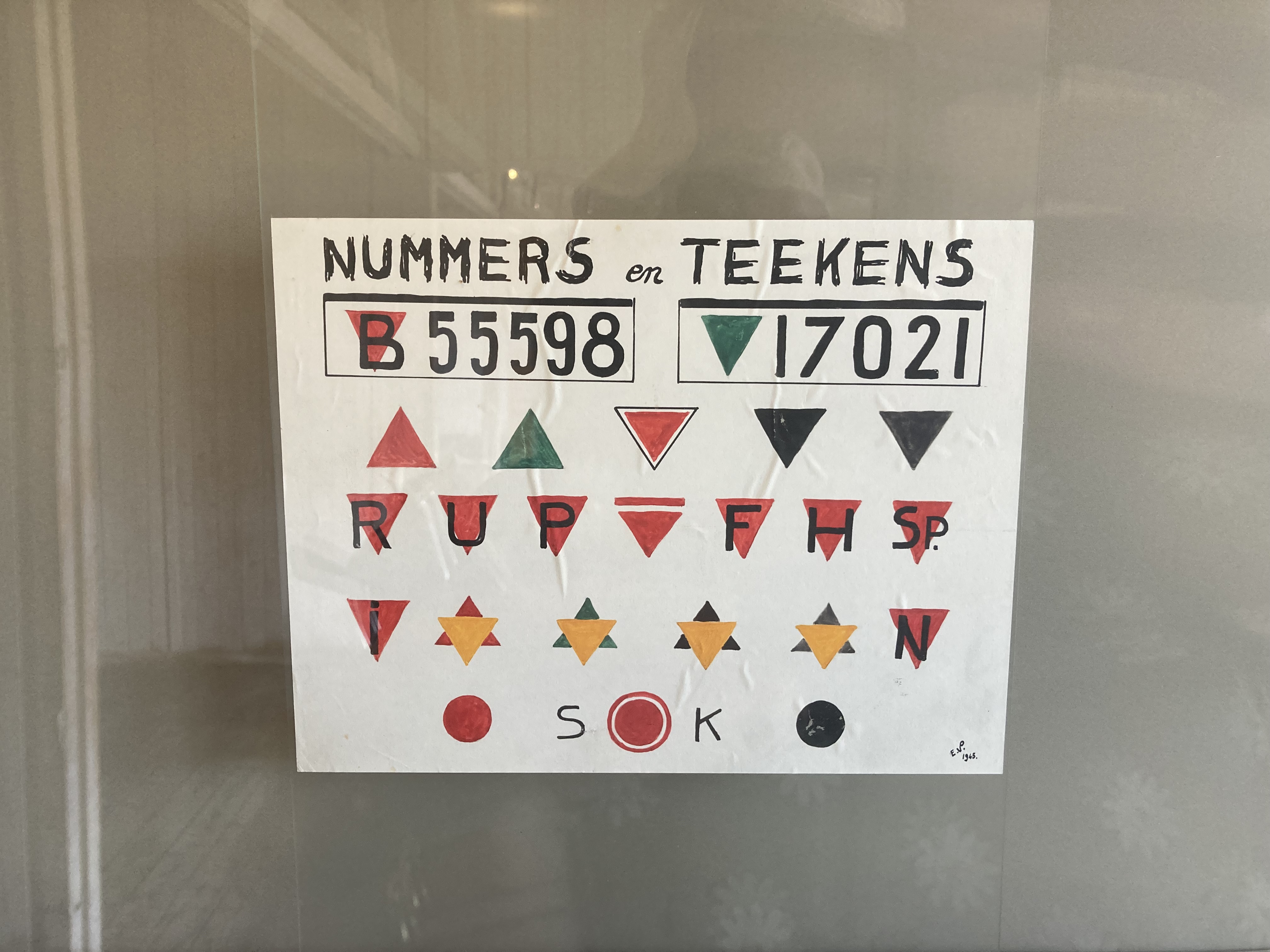
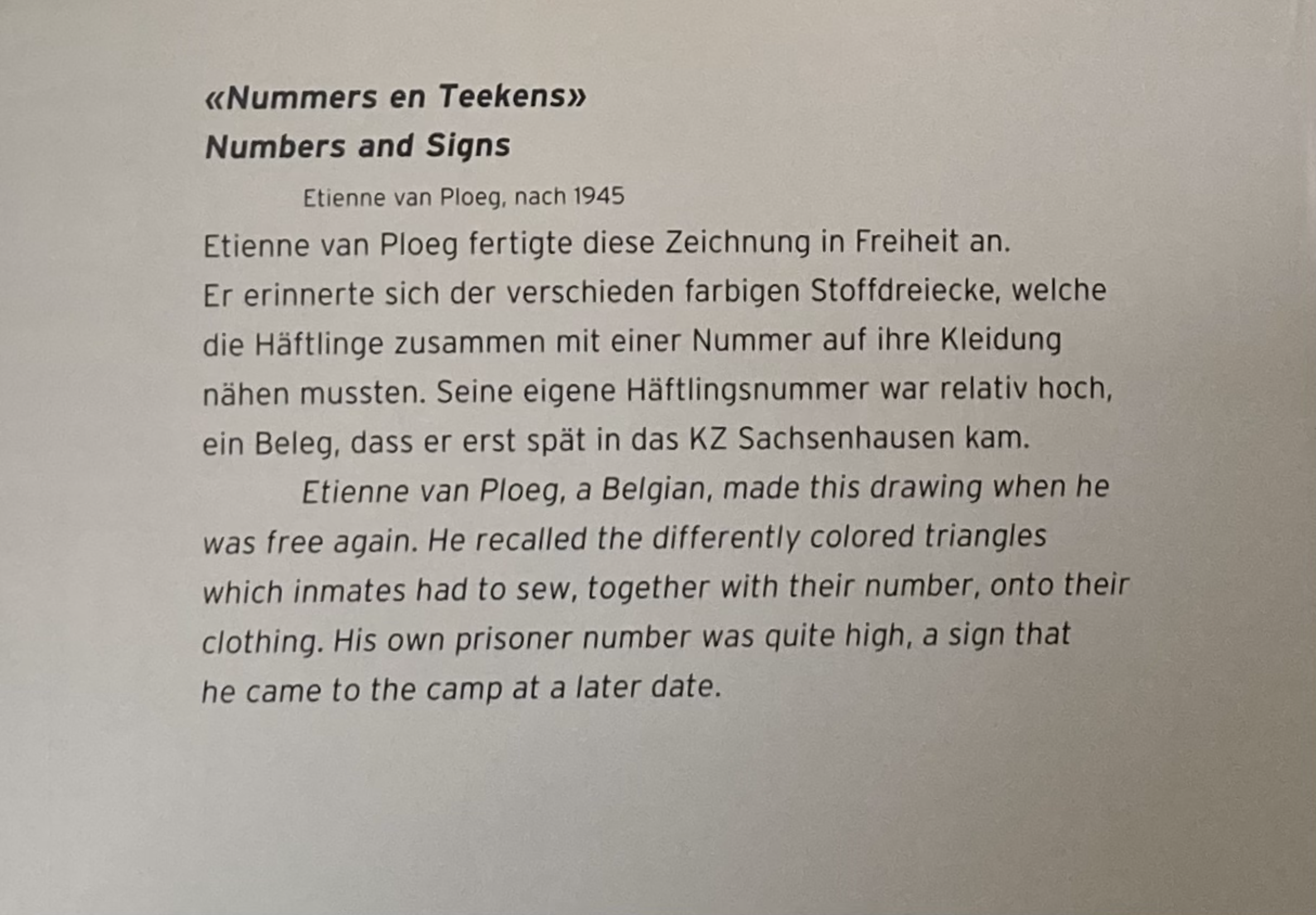
In the midst of inhumanity, people tried to remain humane in their behaviour to other prisoners.
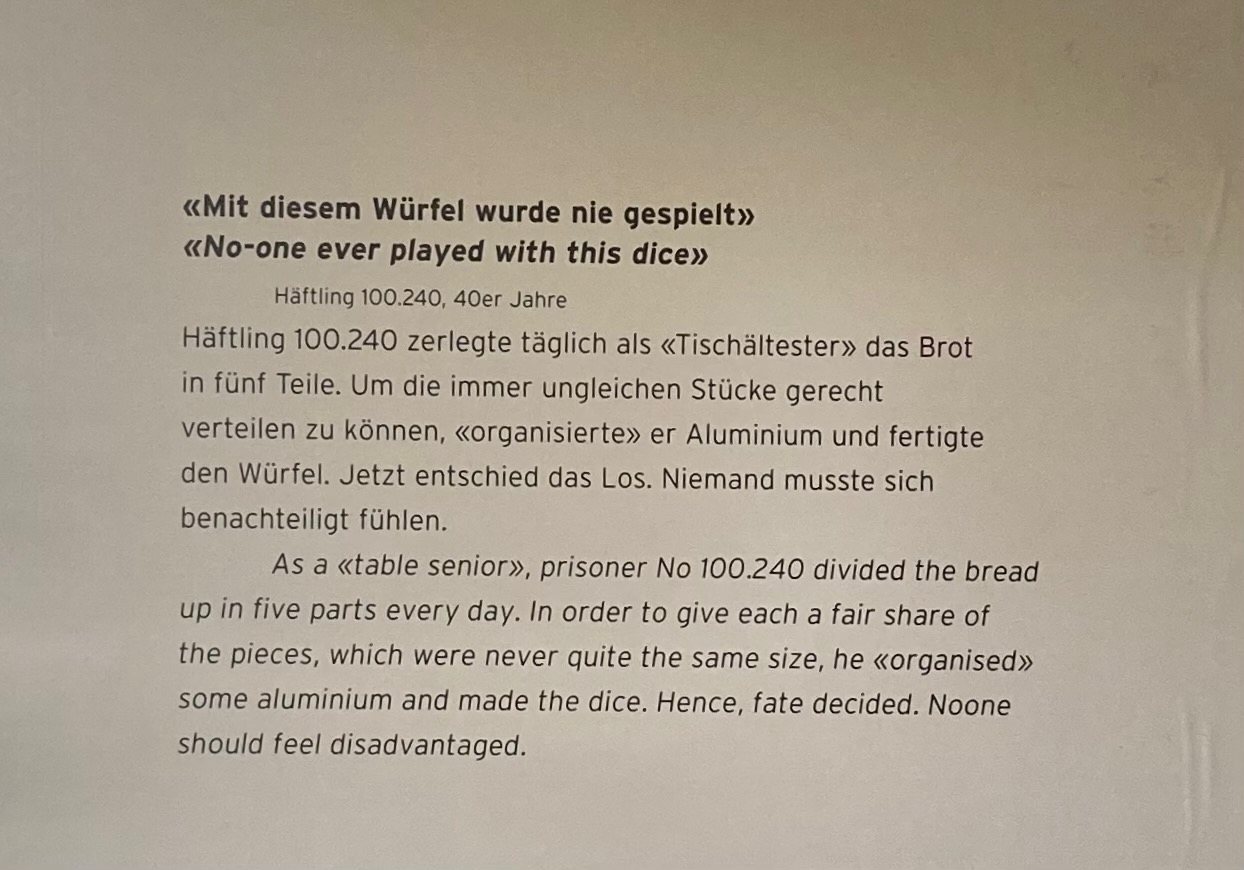
There were sections in different parts of the camp explaining the treatment meted out to homosexuals, Roma & Sinti people, as well as the murder of 13,000 Russian prisoners of war in autumn 1941.
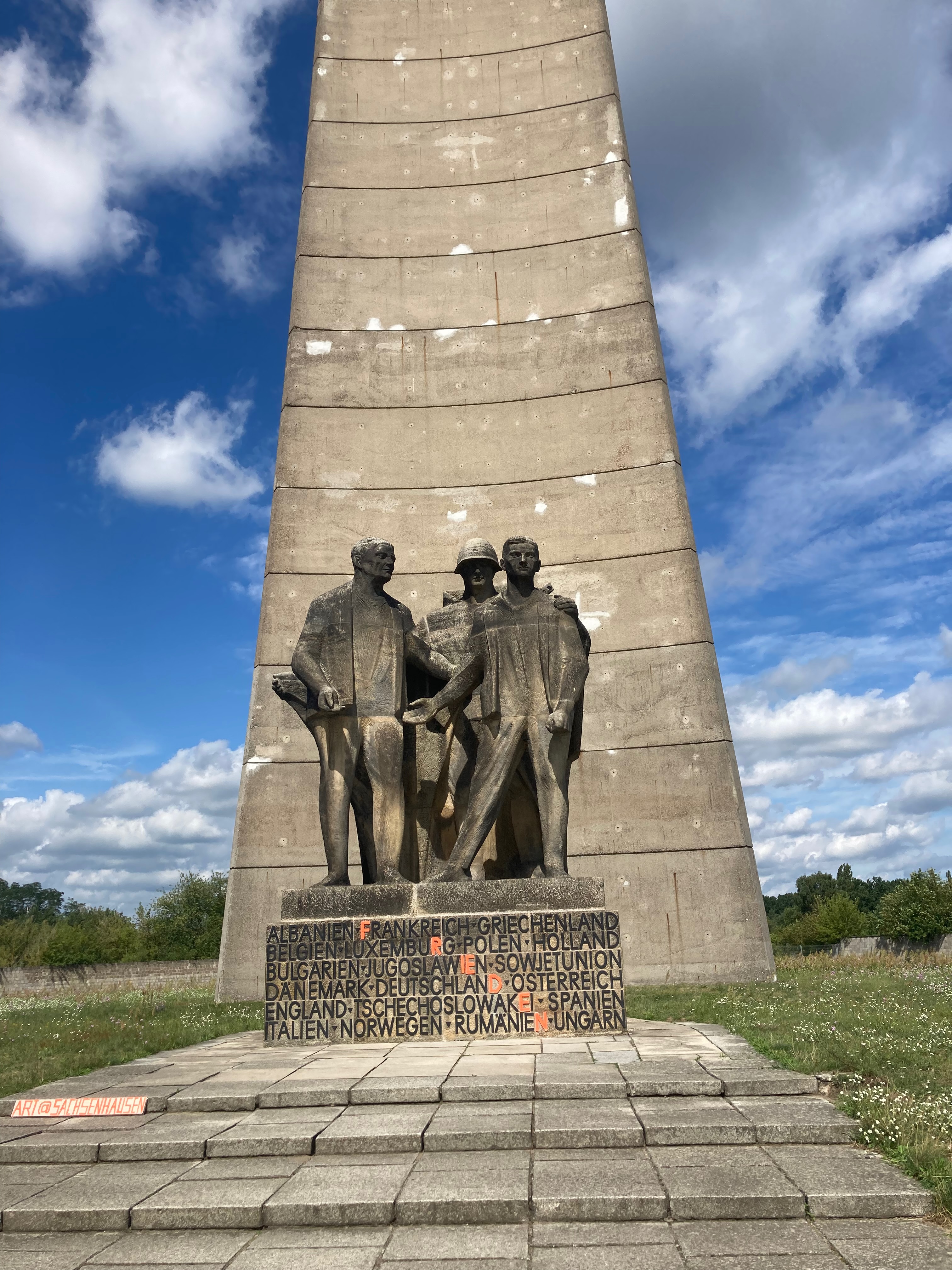
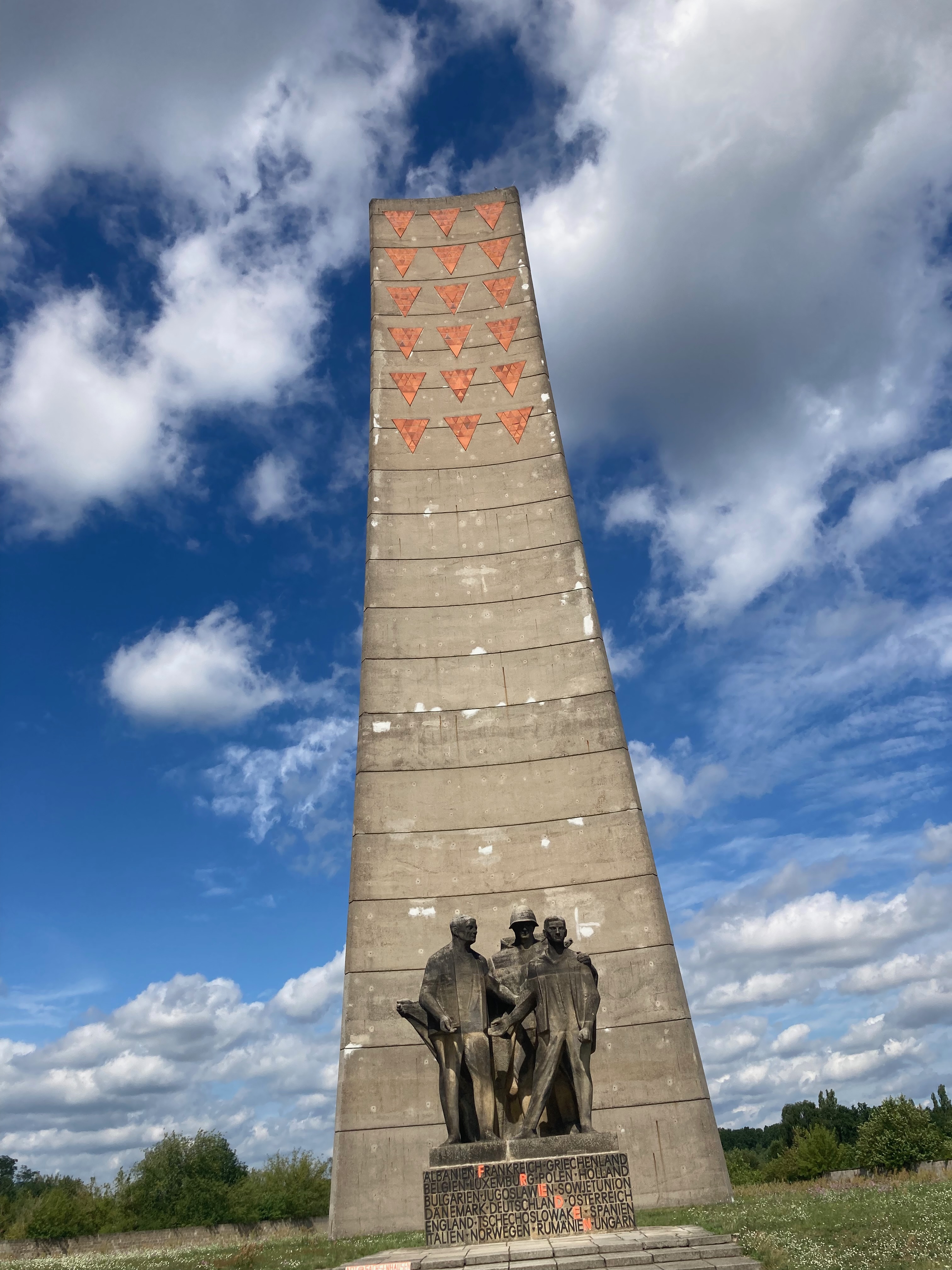
The Soviet memorial. I thought to start with that this was the chimney of the Crematorium, & misunderstood the layout of the camp. The symbol used on the memorial, the red triangles, represented only the political prisoners.
In the midst of the dehumanisation of the prisoners, it seems odd to me that the classification labels were important to the Nazis. It almost seems a way of separating people again & showing that they weren’t all the same. But it may have been done to cause strife amongst the prisoners, turning them agreust one another, I don’t know. One thing that struck me was the remembering of different groups of people, & taking the time to tell so many different people’s stories. I had no idea that Jehovah’s Witnesses were amongst the first to be ‘punished’ for being conscientious objectors.
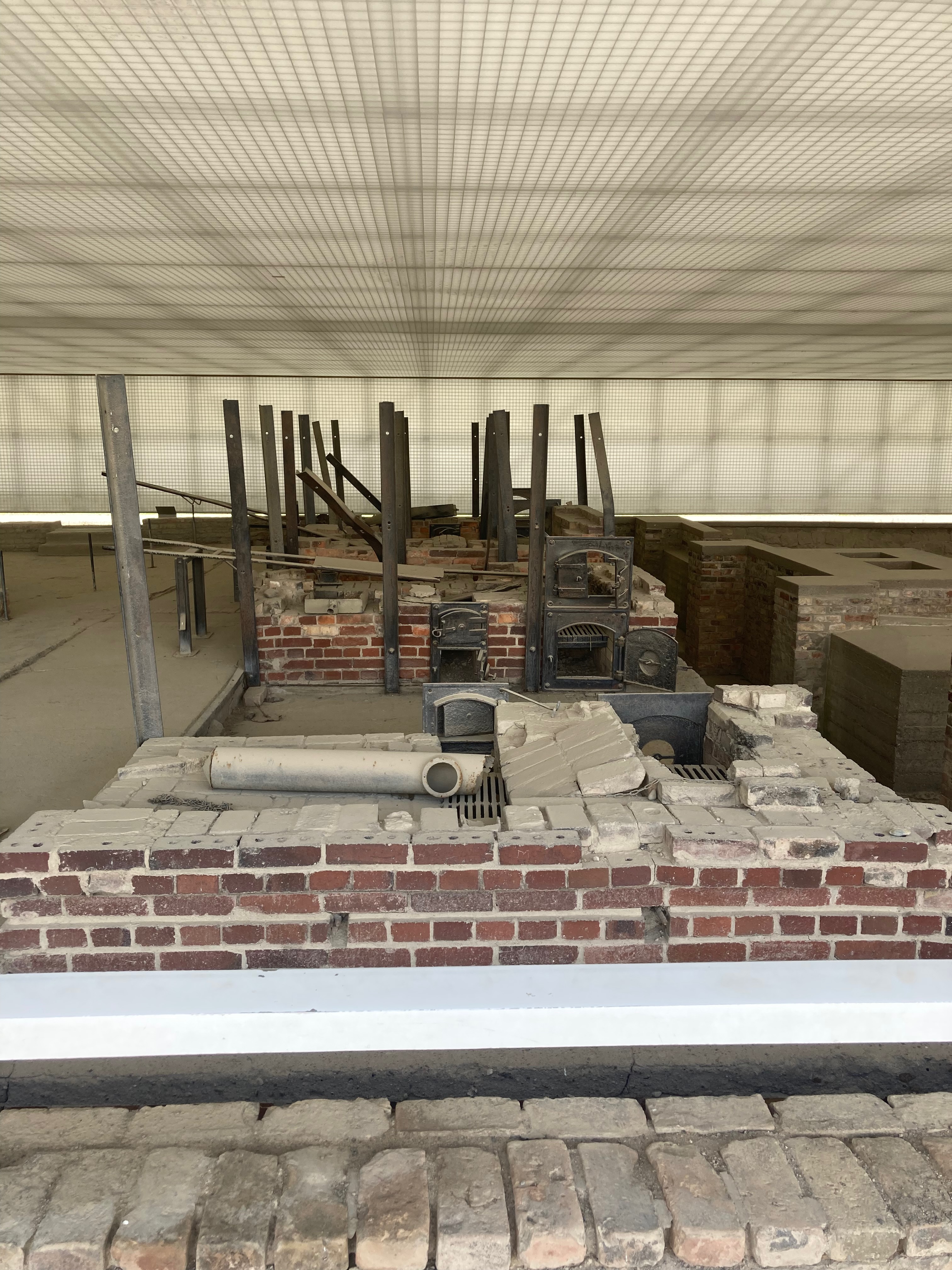
Other bits that I haven’t written about yet
- the prison block within the concentration camp where Niemoller was imprisoned (confessing church) the infirmary - treatment, but also deliberate experiments trying to give patients gangrene so that they could work out how to treat it in their troops, and forced sterilisation
- the camp brothel - women from Bergen-Belsen were brought to camp as an incentive to make the prisoners work harder. Each new group of women were’ visited’ by the SS men first & then the camp inmates were allowed to visit. At least one woman who got pregnant after being abused like this was shot by the SS. (This information was hidden away in a corner & it felt like the language used was deliberately chosen to underplay the treatment these women received. Elsewhere the brutality meted out to prisoners was explicit, in word & picture-but this was just treated euphemistically & felt like it was minimised).
- The display showing the interactions between the camp & the town, showing the complicity and the resistance by town dwellers.